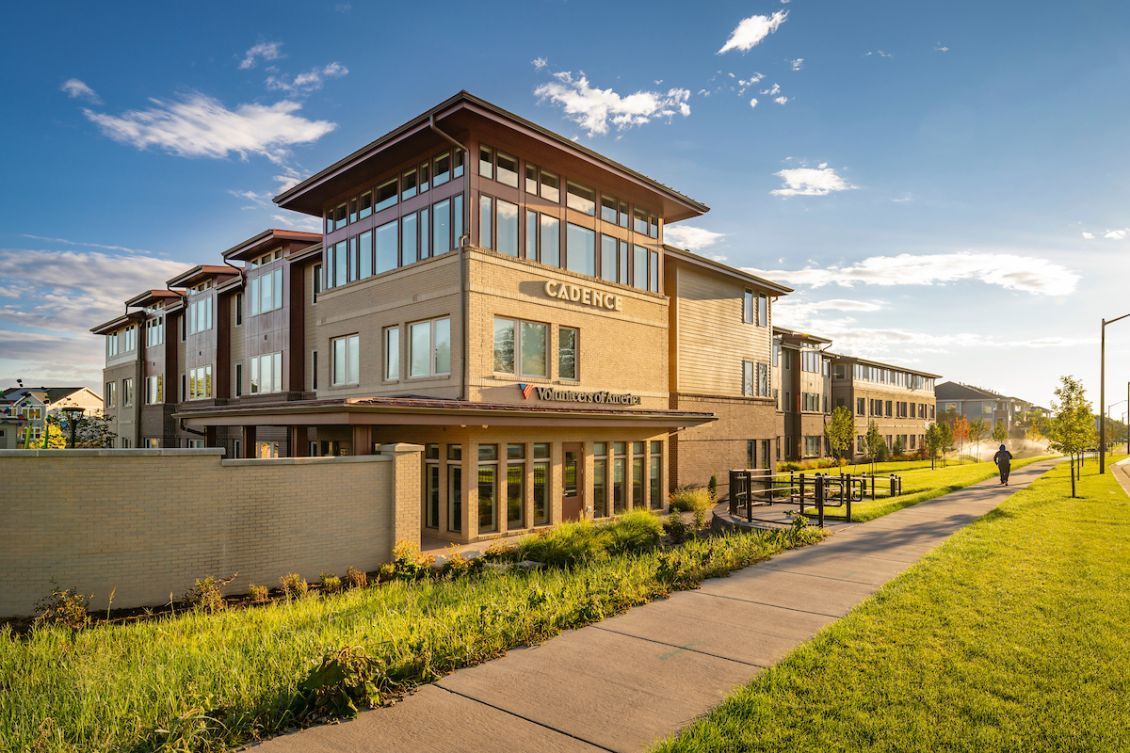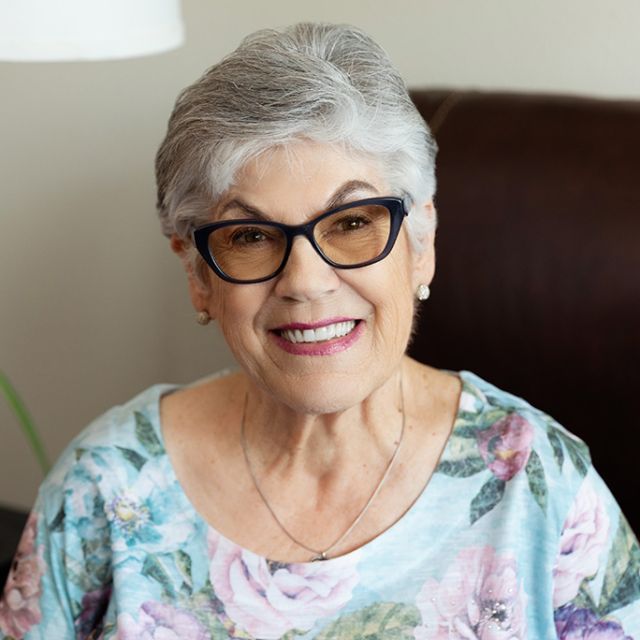Rhythm. Tempo. Flow. These attributes of the word “cadence” are fitting tags for a community designed to bring ease, comfort, and beauty to the seniors who call it home.
“For many of our residents, Cadence is where they’re going to be living for a long time as they age in place,” said Brian Reilly, a development director at Volunteers of America. “We put the thought and care into making the design sustainable for the long term to ensure that the property is an asset for the community for the foreseeable future.”
VOA’s decision to certify the new-construction development to the 2020 Enterprise Green Communities criteria was key to future-proofing Cadence. The criteria represent the most advanced iteration of Enterprise’s certification standard, the only national green building program created almost two decades ago with and for the affordable housing sector. Developments meeting the 2020 criteria are dually certified under Green Communities as well as the International WELL Building Institute’s WELL Building Standard.
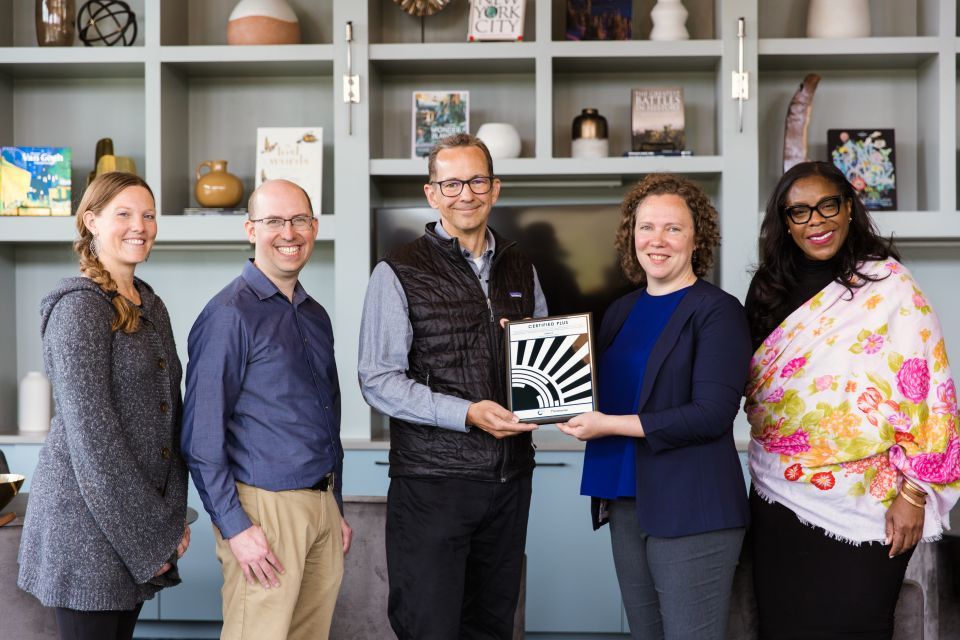
Located in Fort Collins, Colorado, Cadence completed construction in 2022 and achieved two milestones. It marks the first new-construction development to meet Enterprise’s 2020 criteria and the first-ever property to achieve Green Communities Plus, a new, more aggressive tier of the criteria.
Cadence features 55 affordable and service-enriched apartment homes for people 55 and older earning 20% to 80% of area median income. The building promotes an active lifestyle by offering residents an outdoor kitchen, raised garden beds, and easy access to walking and bike trails.
VOA financed the construction of Cadence with Low-Income Housing Tax Credit equity provided by Enterprise. Colorado is one of 35 states plus the District of Columbia and New York City whose LIHTC programs require or incentivize certifying to Green Communities.
Work on Cadence began amid the height of the pandemic at a moment when attention to residents’ well-being was especially keen, Reilly said. “We’re always striving within cost constraints to push the envelope on our buildings,” he said. “And 2020 was a time when we were all thinking a lot about air circulation and healing-centered design elements.”
Investing in Air Quality and Efficiency
Cadence was constructed amid the confluence of the Covid pandemic and a spate of area wildfires. VOA worked with sustainability consultant Group 14 Engineering to improve air quality with the help of a Dedicated Outdoor Air System (DOAS). Group 14 also oversaw the installation of high-efficiency mechanical systems and the air-tight and well-insulated building envelope.
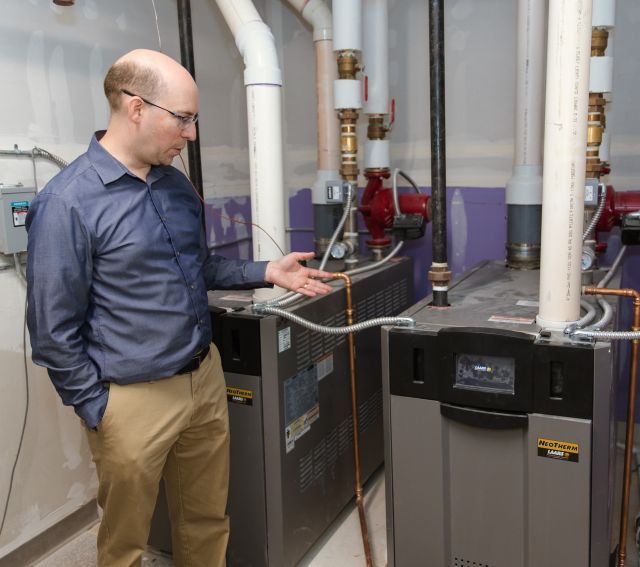
These efforts resulted in certifications from both the Department of Energy’s Zero Energy Ready Home and Enterprise Green Communities Plus. The latter is an optional tier in the Green Communities Criteria that distinguishes developments committed to a path-to-zero greenhouse gas emissions.
Cadence’s multiple certifications demonstrate how the criteria complement other sustainability programs, said Enterprise Program Director Shelby O’Neill: “We created a pathway to achieve deep levels of energy reductions as well as a broad, holistic green building approach.”
Investing in efficient and durable systems makes sense for VOA, said Reilly. “We’re a legacy owner. We’re going to own this building in perpetuity, so it’s important that we build it in a way that doesn’t require us to go back for more funding in 15 or 20 years,” he said. “That allows us to maintain and build more affordable housing.”
Meeting a Critical Need
Rents have been on the rise in Fort Collins, with one study showing a 50% increase between 2010-2020, making access to affordable housing tighter for everyone, including seniors.
Sharron Morden, 80, first tried to move to Fort Collins 10 years ago to be closer to friends and her Denver-based son but couldn’t find anything that fit her budget. Through Housing Catalyst, the area’s Public Housing Authority, she learned about Cadence and during a virtual walk-through, it was love at first sight.
With her son’s help, Morden filled a truck with her belongings and moved from California into her light-drenched one-bedroom apartment last fall. Living here “is just a dream come true – and I can afford to live in the dream. That’s the best part,” she said.
After graduating high school, Morden began working as a hair stylist. She went on to teach the trade, then spent a decade traveling across the Pacific Northwest as top sales rep for a beauty supply company. Through it all, she raised two sons on her own.
At 60, her love of learning led her to college with the goal to launch a coaching business. But the bills kept coming, so Morden returned to teaching cosmetology, eventually retiring at 70 from a field that took a toll on her body and never allowed her to build a secure retirement.
Morden appreciates that the sustainable features at Cadence keep her expenses manageable. “When I saw my electric bill, I almost fell on the floor. I was so worried for the first three months. But it’s never gone over $25,” she said.
The First 20 Cohort
VOA is among a cohort of 20 early adopters who have stepped up to certify their affordable homes to the 2020 criteria and receive joint certification from Enterprise Green Communities and the Well Building Standard. We’ve been tracking the progress of the First 20 developers:
- First 20 developers collectively built and were pursuing final certification of over 1,500 new green, healthy and climate-resilient affordable homes across nine states in 2022.
- Over 250 of the homes are in existing developments that were rehabbed to be healthier for residents and achieve higher energy efficiency.
- Eight of the First 20 cohort teams have undergone or have plans to pursue water quality remediation, helping to ensure water for people in over 900 homes is free of lead and harmful toxins.
- Almost 600,000 square feet of new-home construction is or will be a net-zero energy building.
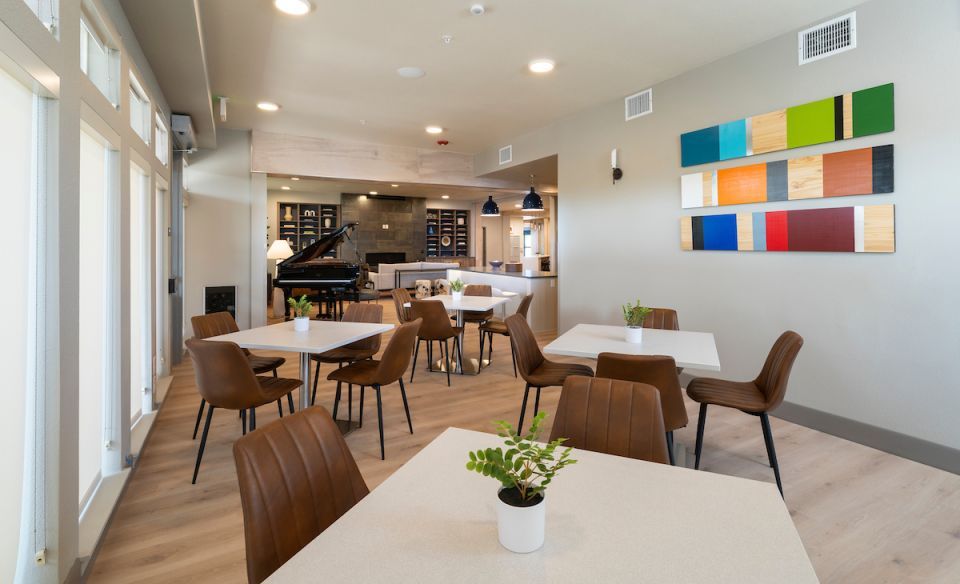
The First 20 cohort also demonstrates a commitment to healing-centered design, which is evident throughout Cadence, helping to “lift people up and contribute to healing from various historic, community, or life trauma,” as the criteria explain. Hallways are over six feet wide and common areas – including a community area that features a grand piano, coffee bar, and café tables – maximize sight lines to allow people to see everyone who is sharing the space with them.
Mandil Inc., Cadence’s interior design team, infused biophilic design principles throughout the building with an abundance of plants and natural textures and finishes like the reflecting stone on the community room fireplace.
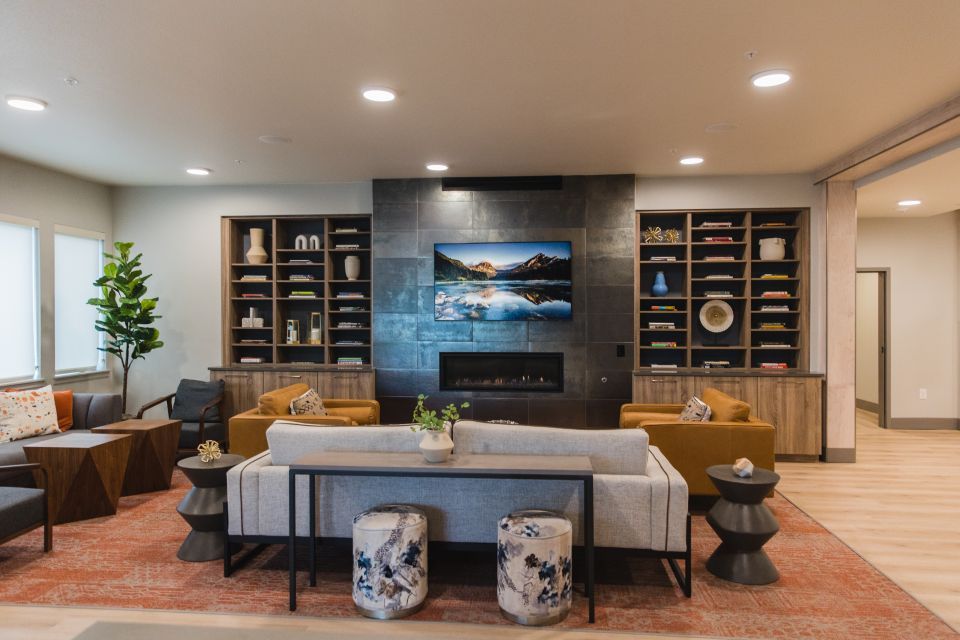
Cadence’s physical location also contributes to residents’ well-being, providing abundant sunlight, views of the Rocky Mountains, and outdoor spaces for group gatherings, private conversations, and solitary moments.
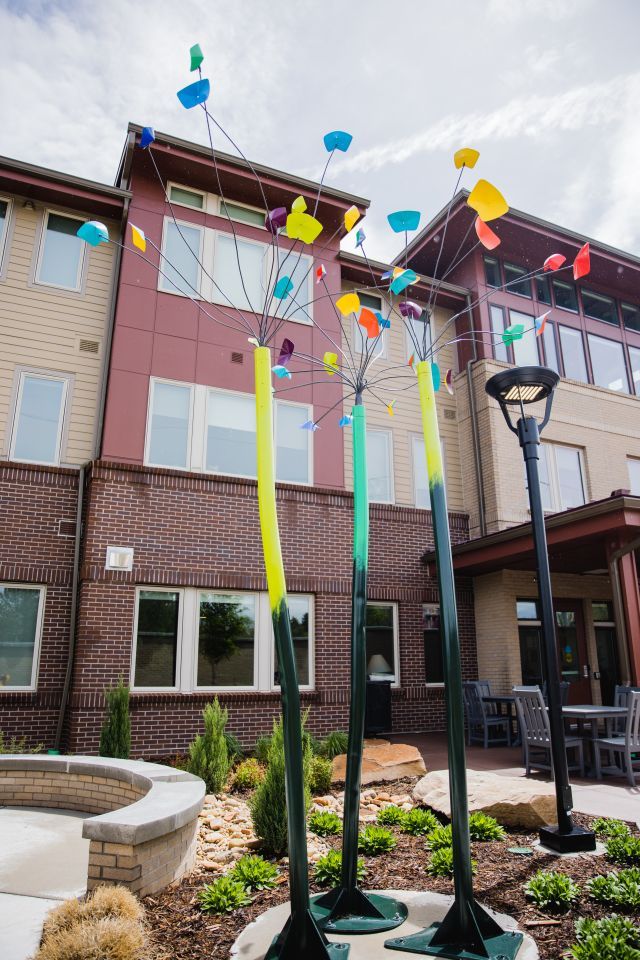
Adjacent to the elevated planters in the patio stands a sculpture of brightly colored arabesques by local artist Reven Marie Swanson titled “Dancing Aspens.”
Windows throughout Cadence are operable. Said Enterprise’s O’Neill: “It may seem like a small thing. But giving people control over their environment and access to fresh air doesn’t happen all the time.”
The high-efficiency windows reflect the 2020 criteria’s focus on creating healthy, tranquil spaces through noise reduction and other strategies. Windows at Cadence help reduce the stress of urban environments by blocking noise from an adjacent major road and nearby train tracks. “It’s the quietest building we’ve ever built in Colorado,” said VOA’s Reilly.
A Life-Changing Move
The tall casement windows are just one of the features that make Cadence feel like a “fancy hotel,” said Karen Deane, who moved in last November with her small dog, a champagne-colored Yorkie mix named Boogie.
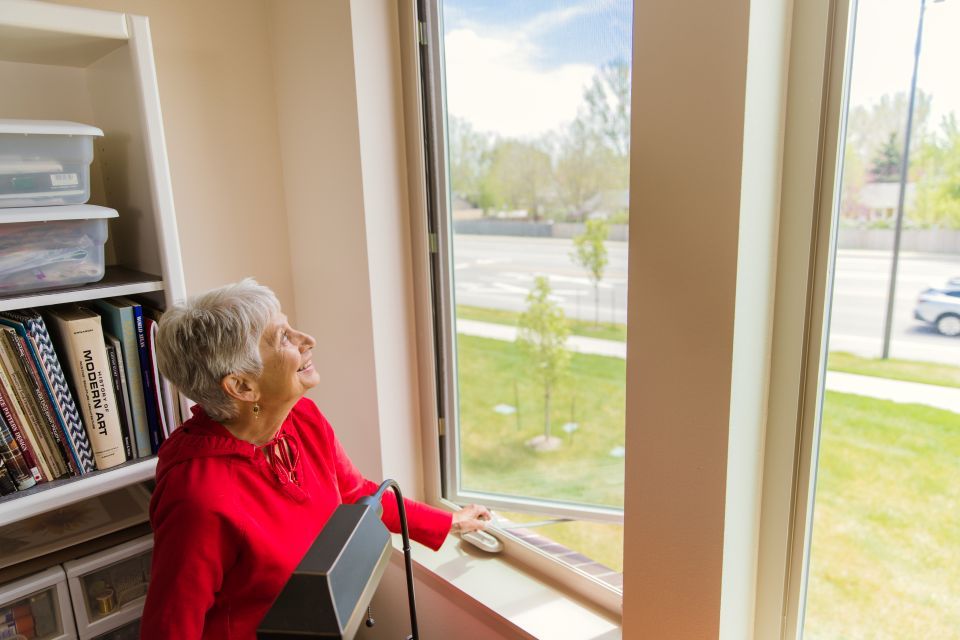
Deane calls Cadence the most “user-friendly” place she’s ever lived. “The dishwasher, washer and dryer, full-sized appliances – this is so luxurious for me,” she said with laugh.
A lifelong artist who retired at 73 from her beloved job as a children’s librarian, Deane began looking for a new home following a rent increase at her previous Fort Collins apartment. The building lacked an elevator, and she worried about becoming isolated.
“I’m fine with my mobility but some of my friends are not. It was a problem,” she said. Today, Deane loves having friends visit her at Cadence, especially getting together with them to play board games in the elegant third-floor game room.
Living in a well-maintained building where her rent is manageable has been life-changing for Deane. “It’s alleviated a lot of my anxieties,” she said. “And I feel like I can move forward with some of the projects that I want to do in retirement” – like organizing portfolios of the artwork she’s created over the years, including stunning photographs of Colorado wildflowers.
“It’s exciting to have the security to go forward. I just want to keep trying everything I can,” said Deane.
Building Green from the Get-Go
Reilly said the integration of VOA’s architect, Shop Works Architecture, general contractor, and green consultant, Group 14 Engineering, was essential to the success of Cadence. “It’s critical to bring in the green consultant early,” says Reilly. “They’re there from the get-go to work on the front-end design and on the back end to help finish out the certification.”
VOA also convened community members and current residents of similar properties they’ve developed to help inform the design and construction of Cadence. Through an integrative design process – a core principal of the Green Communities criteria – developers can break down traditional silos and create space for choice and a common level of understanding.
At Cadence, community input is reflected in the building’s vernacular architecture, like its craftsman-style sloped roof. Reilly says the outreach paid off in the overall design and aesthetics of Cadence, while helping to enhance community perceptions about the property.
A couple of months before the ribbon-cutting, an email from a community member inquiring when residents would be moving in took Reilly by surprise.
“They wanted to know when they could begin welcoming residents to the neighborhood,” said Reilly. “That’s not something you always see with affordable housing.”
